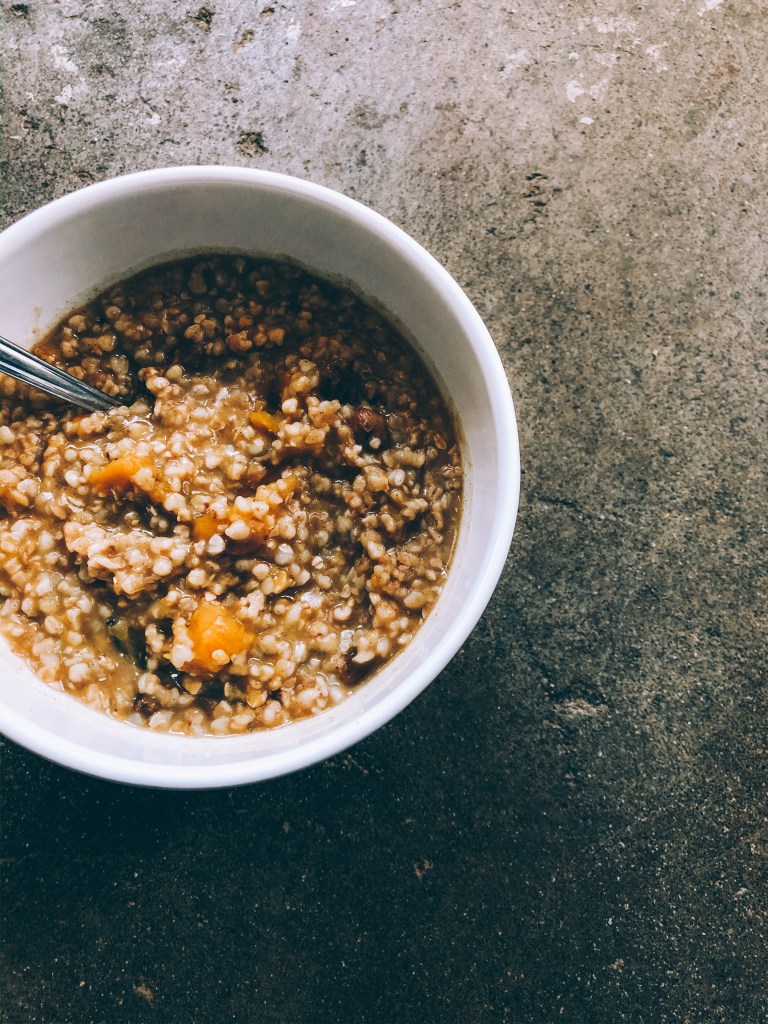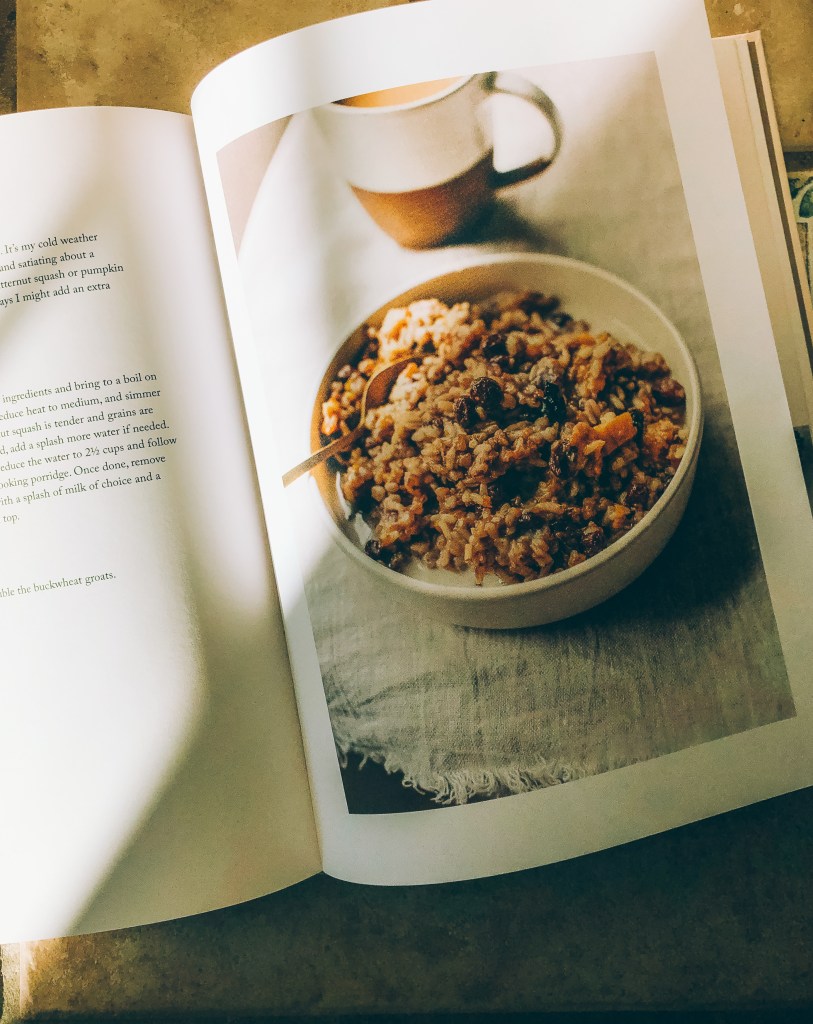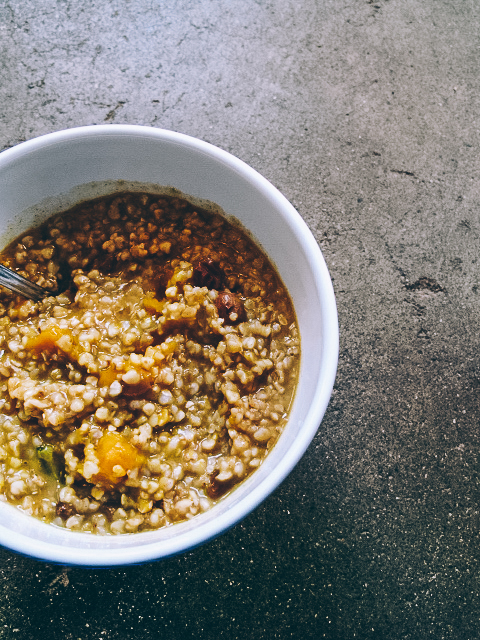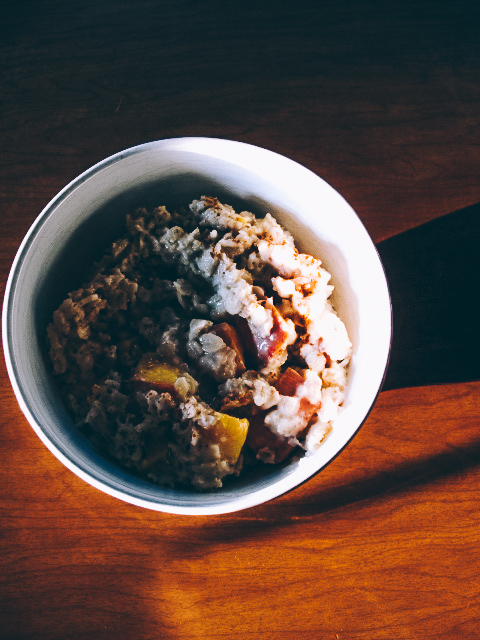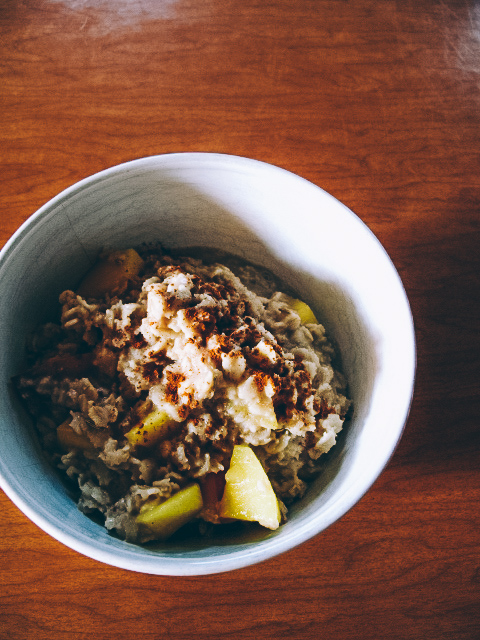
Just in time for summer, here’s a delicious new way to start your day.
So many athletes and active individuals tend to eat oatmeal as a morning go-to, and inevitably get stuck in a rut with the same ingredient and flavor combinations day in and day out.
Oatmeal is super nourishing, filling, fiber-rich, and generally an all-around superb breakfast option. But changing it up every now and again is also optimal to encourage digesting and absorbing a wide range of micronutrients as well as feeding diversity in the gut microbial community.
Another challenge that you might find yourself in, is that active individuals often don’t start the day with “enough” food.
Classified as a “within-day energy deficiency,” an example is starting your day with a small breakfast, slightly larger lunch, and then having a moderate to large dinner. OR expending more energy than you’ve consumed (through both activity and daily living), in the early hours of the day and not topping up the tank until hours later, creating metabolic and physiological stress.
I also used to eat this way. It was part of my restrictive eating and diet mentality paradigms.
Not only is this style of consuming most of the day’s caloric energy late in the day problematic for digestion, since eating larger meals late at night is challenging for the body to digest and negatively impacts sleep quality, but it also creates a feast and famine cycle in the mind and body.
When I was caught in this pattern, I was routinely hungry all the time because I was training fairly heavily, and not proportioning all my meals to be adequate for what I needed.
For more information on the topic of Within-Day Energy Deficiency, here and here are two great articles.
And two of the scientific studies frequently referenced on this topic:
Within-Day Energy Deficiency and Reproductive Function in Female Endurance Athletes
Within-Day Energy Deficiency and Metabolic Perturbation in Male Endurance Athletes
The portion size below is “larger” than usual, but just about right for moderately active individuals. If you’re more or less active, or in a larger or smaller body (than average), feel free to adjust portion size accordingly.

Tart Cherry + Apricot Oatmeal
Prep: none | Cook: 10-15 minutes | Serves: 1
1 1/2 cups water
1/8 tsp. mineral salt
⅛ tsp. ground ginger
⅛ tsp. ground cardamom
¼ tsp. fennel seeds
3/4 cup old-fashioned oats, certified gluten-free as needed
2 Tbs. dried tart cherries
2 apricots, diced (approx. 150 grams)
2-3 tsp. sunflower butter
1-2 tsp. chia seeds
- On the stovetop, bring the water, salt, and spices to a boil in a small saucepan.
- When boiling, turn down to medium-low, and stir in the oats and dried cherries. Let cook until it is soft and nearly all the water has been absorbed, about five minutes.
- Then add in the diced apricot and stir. Turn off the heat and stir in the sunflower butter, and chia seeds, making sure they are spread evenly throughout.
- Spoon into a bowl and enjoy!
Notes / Substitution Suggestions:
– adjust the spices as needed for your energetics
– omit the tart cherries and increase to three apricots
– for a smaller portion, use ½ cup rolled oats
– omit either the sunflower butter or chia seeds and double the amount of the one you keep in.
Within my nutrition practice, I specialize in endurance athletes and digestive imbalances. If you’re curious about how to improve your performance, health, and digestion, I encourage you to reach out to me for more personalized support.

